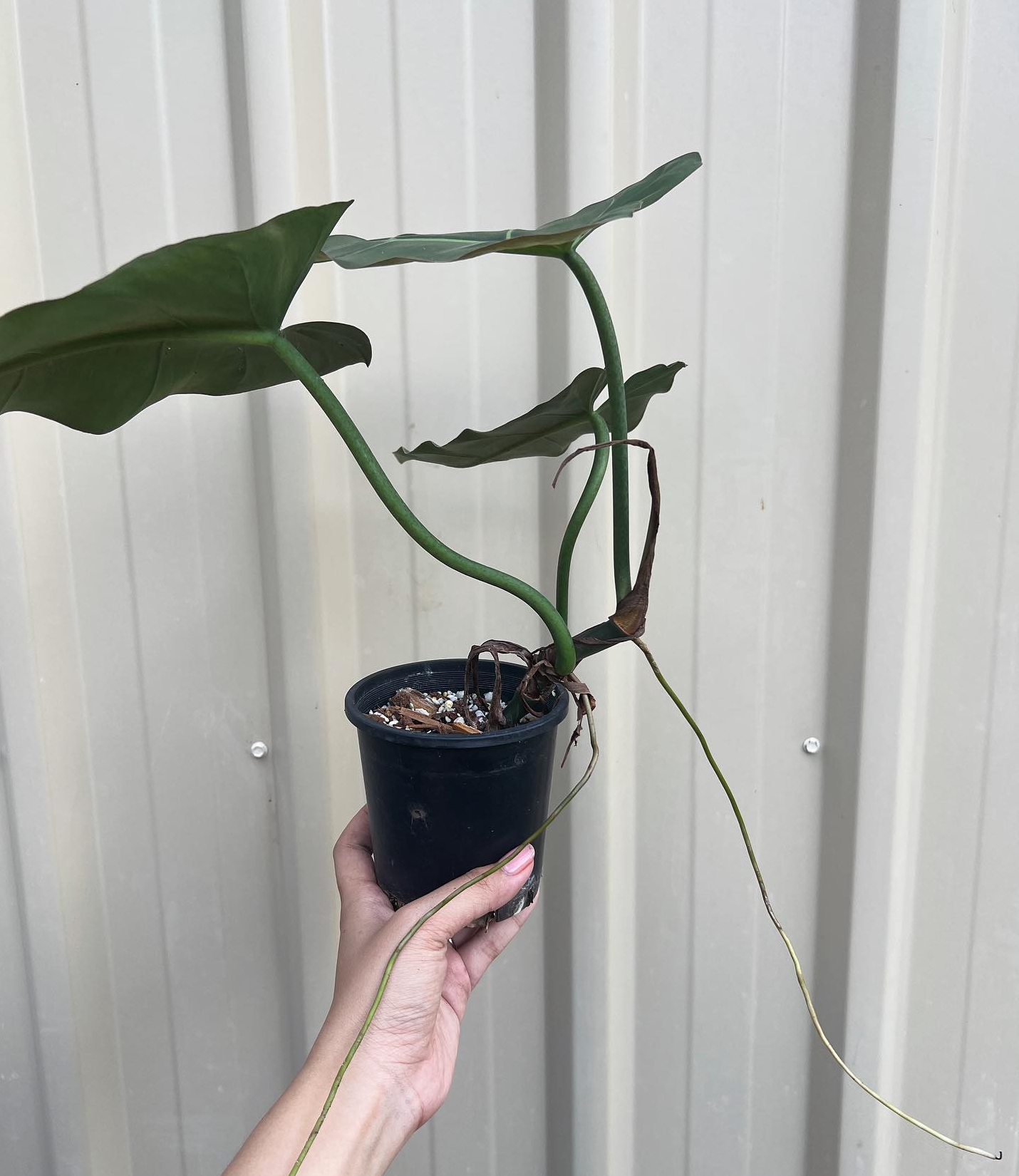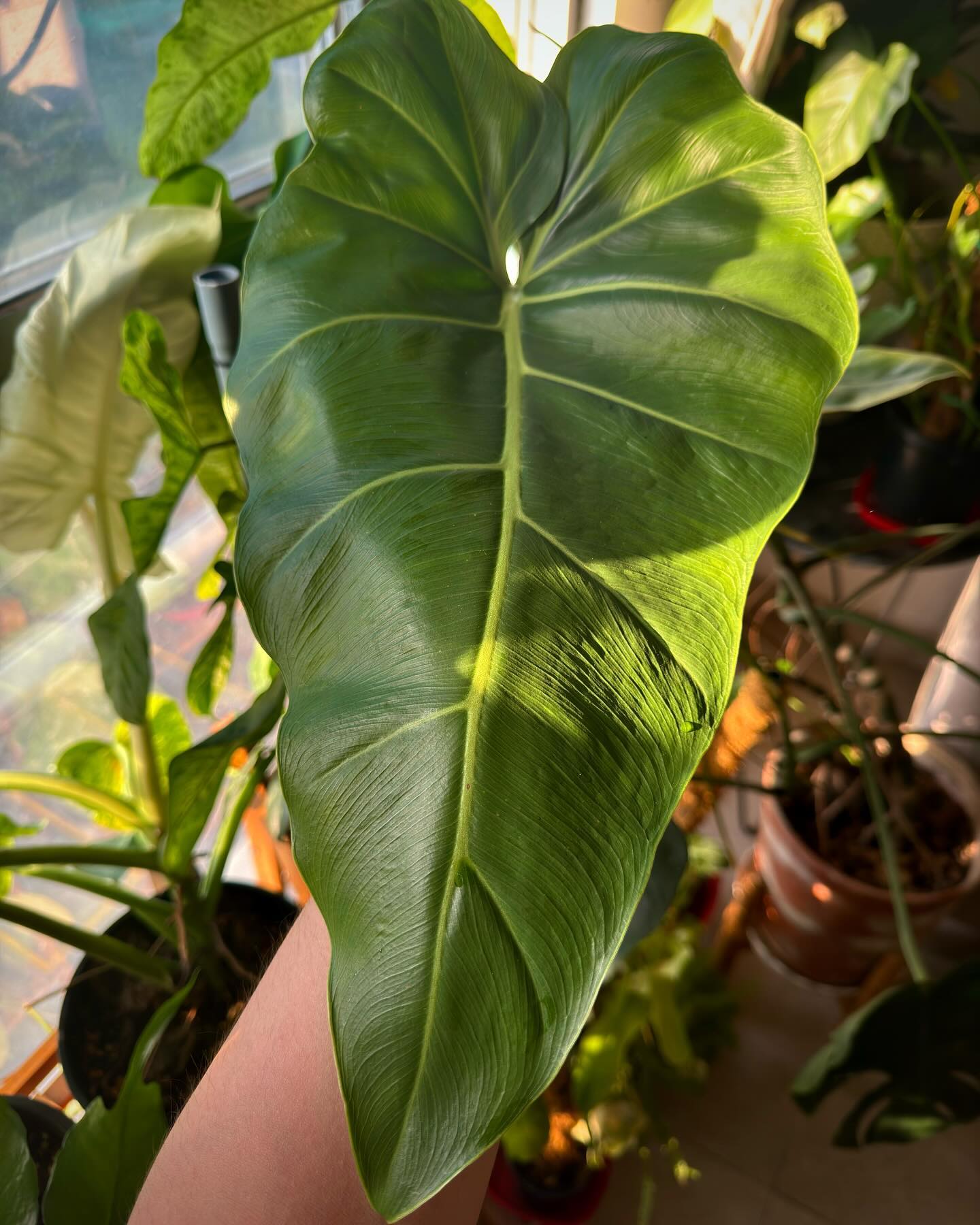Basic Information
Philodendron Maximum is capable of producing some of the largest foliage in the genus. Take a look at some larger specimens here. This species grows hemiepiphytically in nature and is a fast grower in our experience.



Light
The Philodendron Maximum flourishes in bright, but not direct sunlight. This plant thrives in the dappled light of tropical forests, so it’s important to avoid intense direct sunlight to prevent leaf burn. The plant is best placed near an east-facing window where it can receive gentle morning light. If your living space doesn’t have access to natural light, you can consider using grow lights as an alternative. The key is to provide enough light for photosynthesis without causing any damage to the leaves.
Water
The watering needs of this particular plant are moderate. Allowing the soil to dry out partially between waterings is recommended to avoid overwatering and root rot. You can check the soil moisture by touching the top inch of the soil with your finger; if it feels dry, it’s time to water. Make sure that your pot has good drainage to prevent water accumulation. When you water your philodendrons, do it slowly, with water at room temperature, and constantly drain any excess water from the pot. If you notice that the soil has become compacted or so dry that it looks like a dried-up river bed, then soak the entire root ball in a bucket of water for 10 minutes or until the water has been thoroughly absorbed into the soil. This will loosen up the compacted dirt.
Soil
Philodendron Maximum is a plant that grows best in soil that is well-drained, chunky, and aerated. To create this kind of soil, you can mix potting soil, orchid bark, perlite, and a small amount of charcoal. This combination of soil components helps to ensure good aeration and drainage, while also providing the organic matter that the plant needs to thrive. The charcoal in the soil mixture is particularly helpful because it helps to purify and deodorize the soil, which can reduce the risk of fungal and bacterial growth.
Temperature
The Philodendron Maximum plant thrives in temperatures ranging between 55-80°F (13-27°C). It is sensitive to frost and therefore requires a warm environment to grow well. If you live in a cooler climate, it is important to keep the plant away from drafty windows and doors during the colder months to maintain a consistent temperature.
Humidity
Philodendron Maximum thrives in a moist environment, with an ideal humidity level of around 60% or higher. If you’re growing it indoors, you may need to take measures to increase humidity, especially if the air is dry. You can use a humidifier or place the plant on a tray filled with pebbles and water to create more moisture. While misting the plant regularly can also be helpful, make sure not to overdo it as this can cause issues with the leaves.
Fertilizer
During the growing season, fertilize your Philodendron Maximum monthly with a balanced, liquid houseplant fertilizer. Dilute the fertilizer to half the recommended strength to avoid over-fertilization, which can harm the plant.
Growth Rate
This plant is recognized for its robust growth. It can generate new leaves every few weeks if the conditions are right and can grow up to 3 feet tall indoors. Regular pruning in early spring can help keep its size and shape in check. To encourage healthy new growth, remove any dead or damaged leaves and stems.
Tip: As it grows, it should either be staked or allowed to climb up moss poles. Multiple aerial roots will form in high-humidity environments, giving the plants a beautiful appearance.
Pet Safety
As with many houseplants, the Philodendron Maximum may be toxic if ingested by pets. It’s always wise to keep it out of reach of curious cats and dogs.
Grow in Semi-Hydro
- Philodendrons, celebrated for their lush foliage and adaptability, thrive in semi-hydroponic systems such as LECA/Pon, thanks to their resilient root systems and preference for consistent moisture.
- Shifting a Philodendron to a semi-hydroponic setting works well using a Nutrient Stagnant Wicking (NSW) method, providing a stable and effective environment for growth.
- Within the LECA/Pon environment, Philodendron roots adapt swiftly, effectively managing any early challenges in adapting to the NSW system.
- For nourishing Philodendrons in semi-hydro systems, a nutrient solution with a concentration around 800-1000ppm is optimal.
- Philodendrons are versatile in adapting to a range of temperature and humidity levels, making them ideal for various indoor settings.
- Regular care involves keeping an eye on the water level in the reservoir and periodically flushing the system to ensure the Philodendron’s healthy and consistent growth.
- If your Philodendron is a climber, it’s a must to look at our Moss Pole guide to have a proper set-up.
Tips
- Rotate the plant periodically for even light exposure.
- Stake the plant to support its climbing habit, using a moss pole or trellis.
- Repot every 1-2 years or when it becomes rootbound.
- Regularly check for pests such as spider mites or mealybugs.
- Use sterilized pruning tools to prevent the spread of disease.
- Avoid sudden temperature changes to keep the plant stress-free.
- Pay attention to leaf changes, as they can indicate care issues such as too much or too little water, light, or nutrients.
Caring for a Philodendron Maximum is a rewarding experience. With these detailed care tips, you’ll be able to nurture a thriving, lush plant that adds a touch of the tropics to your home.
Happy planting! 🌱


